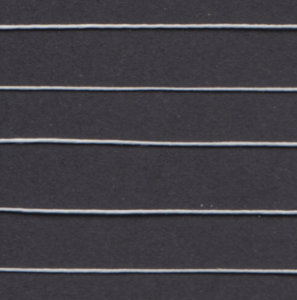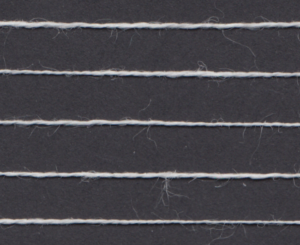Search the Blog
Latest Comments
Harma
Blog Break .
29. April 2024
Isn't the selvedge something to worry about in a later stage? It seems to me a lot more important th...
Beatrix
Experiment!
23. April 2024
The video doesn´t work (at least for me). If I click on "activate" or the play-button it just disapp...
Katrin
Spinning Speed Ponderings, Part I.
15. April 2024
As far as I know, some fabrics do get washed before they are sold, and some might not be. But I can'...
Kareina
Spinning Speed Ponderings, Part I.
15. April 2024
I have seen you say few times that "no textile ever is finished before it's been wet and dried again...
Katrin
How on earth did they do it?
27. März 2024
Ah, that's good to know! I might have a look around just out of curiosity.
I've since learned that w...
Taking a close look... at linen threads.
You might not guess it, but I have a thing for threads. Which, obviously, includes linen sewing threads.
Linen is a wonderful fibre, and good linen threads are very strong - at least strong in the sense of "can hold a lot of tension". Linen is never strong against abrasion, which is one of the reasons to give the thread a rub with beeswax before using it for sewing.
The best, strongest, and nicest linen threads are those that are wet-spun from long-line flax. Linen fibres are rather smooth, and longer fibres together with appropriate amounts of twist make for stronger yarn than when it's spun from shorter fibre bits. Linen yarns also tend to have a few slubs here and there - much more so than cotton. These can be annoying when using the thread, and having few and relatively small slubs is also a sign of good quality.
The slight variation within a yarn regarding its thickness is also a reason why three-ply sewing threads are more common these days: They have a rounder cross-section, and the probability of the thickness variation cancelling itself out in a mix of three yarns is higher than with two yarns. That means it's more pleasant and more easy to work with.
Here you can see the difference:
[caption id="attachment_5723" align="aligncenter" width="297"] Three-ply linen yarn - that is my extra fine linen sewing thread.
Three-ply linen yarn - that is my extra fine linen sewing thread.
[caption id="attachment_5725" align="aligncenter" width="300"] Two-ply linen yarn, about the same thickness - that is my 60/2 linen sewing thread.
Two-ply linen yarn, about the same thickness - that is my 60/2 linen sewing thread.
The two-ply also looks more frizzy - that is also an effect of the tighter spinning and the tighter plying the three-ply yarn has.
So what is the better thread for your project? As so often, the answer is: That depends.
If you want to go as historically correct as possible, the two-ply is definitely the way to go, as anything with more plies than two is a HUGE exception for medieval and early modern times.
Why? If you're spinning by hand, it makes quite a difference whether you are making a two-ply yarn or a three-ply yarn: You have to spin the whole length of necessary yarn a third time for the three-ply. Historically, two-ply sewing threads thus were the rule. Only in extremely rare cases can we find a three-ply yarn somewhere before the rise of mechanical spinning and plying - a two-ply will bring all the stability needed for sewing or other techniques where you work with open ends or twist, and is the quickest and easiest ply to make.
Today, though, machine-spinning allows for setting one size of yarn thickness and then easily using a higher number of plies to make a thicker end product. And with three-ply or four-ply yarns having the advantages described above, these kinds are now the rule. Consequently, it is rather hard to find two-ply linen yarns suitable for sewing these days. Which is also the reason why I'm carrying a three-ply thread in my shop, this is stock from the days when I had not found a source for the two-ply yarns yet.
If you're not a total stickler for details, or want to have the bit more smoothness and stability that the three-ply will give you, then you can well go for the more modern thread. And with the fineness this thread has, it will take most people a close look, a magnifying glass and the possibility to un-twist a bit of the thread to be able to tell it's a modern three-ply!
Linen is a wonderful fibre, and good linen threads are very strong - at least strong in the sense of "can hold a lot of tension". Linen is never strong against abrasion, which is one of the reasons to give the thread a rub with beeswax before using it for sewing.
The best, strongest, and nicest linen threads are those that are wet-spun from long-line flax. Linen fibres are rather smooth, and longer fibres together with appropriate amounts of twist make for stronger yarn than when it's spun from shorter fibre bits. Linen yarns also tend to have a few slubs here and there - much more so than cotton. These can be annoying when using the thread, and having few and relatively small slubs is also a sign of good quality.
The slight variation within a yarn regarding its thickness is also a reason why three-ply sewing threads are more common these days: They have a rounder cross-section, and the probability of the thickness variation cancelling itself out in a mix of three yarns is higher than with two yarns. That means it's more pleasant and more easy to work with.
Here you can see the difference:
[caption id="attachment_5723" align="aligncenter" width="297"]
 Three-ply linen yarn - that is my extra fine linen sewing thread.
Three-ply linen yarn - that is my extra fine linen sewing thread.[caption id="attachment_5725" align="aligncenter" width="300"]
 Two-ply linen yarn, about the same thickness - that is my 60/2 linen sewing thread.
Two-ply linen yarn, about the same thickness - that is my 60/2 linen sewing thread.The two-ply also looks more frizzy - that is also an effect of the tighter spinning and the tighter plying the three-ply yarn has.
So what is the better thread for your project? As so often, the answer is: That depends.
If you want to go as historically correct as possible, the two-ply is definitely the way to go, as anything with more plies than two is a HUGE exception for medieval and early modern times.
Why? If you're spinning by hand, it makes quite a difference whether you are making a two-ply yarn or a three-ply yarn: You have to spin the whole length of necessary yarn a third time for the three-ply. Historically, two-ply sewing threads thus were the rule. Only in extremely rare cases can we find a three-ply yarn somewhere before the rise of mechanical spinning and plying - a two-ply will bring all the stability needed for sewing or other techniques where you work with open ends or twist, and is the quickest and easiest ply to make.
Today, though, machine-spinning allows for setting one size of yarn thickness and then easily using a higher number of plies to make a thicker end product. And with three-ply or four-ply yarns having the advantages described above, these kinds are now the rule. Consequently, it is rather hard to find two-ply linen yarns suitable for sewing these days. Which is also the reason why I'm carrying a three-ply thread in my shop, this is stock from the days when I had not found a source for the two-ply yarns yet.
If you're not a total stickler for details, or want to have the bit more smoothness and stability that the three-ply will give you, then you can well go for the more modern thread. And with the fineness this thread has, it will take most people a close look, a magnifying glass and the possibility to un-twist a bit of the thread to be able to tell it's a modern three-ply!
Comments 2
Beatrix
on Dienstag, 15. Dezember 2020 20:13
Katrin
on Mittwoch, 16. Dezember 2020 13:57
That's true, thank you for adding this!
I have found a thread which is a little bit thinner than the 60/2 in the picture (though nominally also a 60/2) which has a slightly higher twist angle, but it's still not as high as the medieval ones you mention. Much like the same issue in wool threads, I'm afraid the only solution for this problem is to have yarns spun to specifications...



